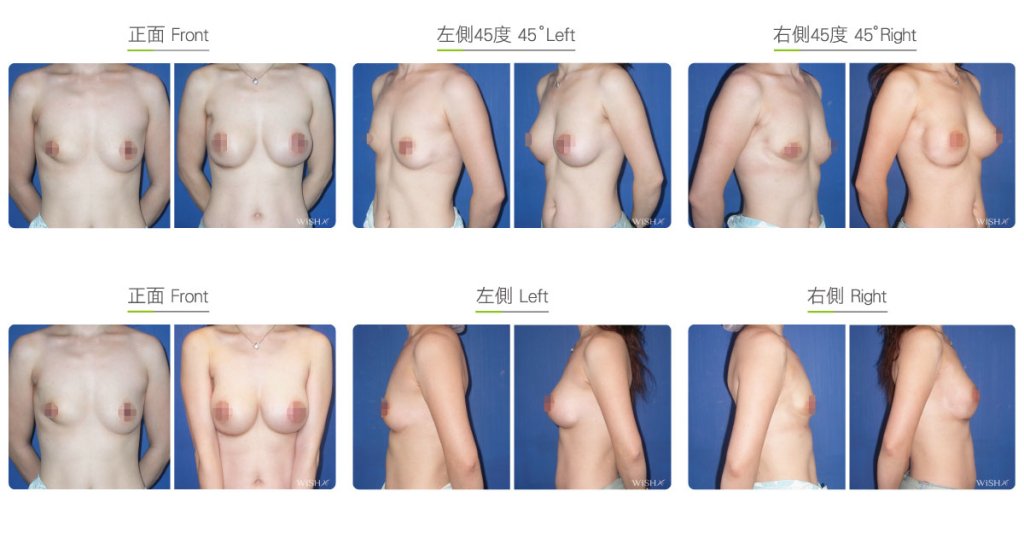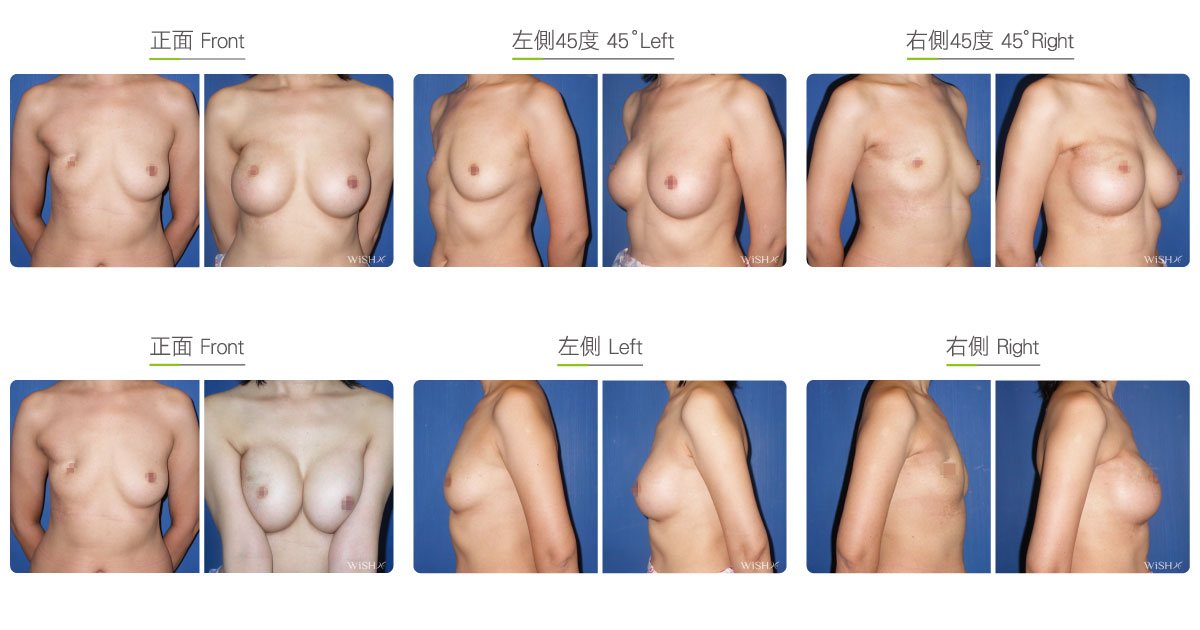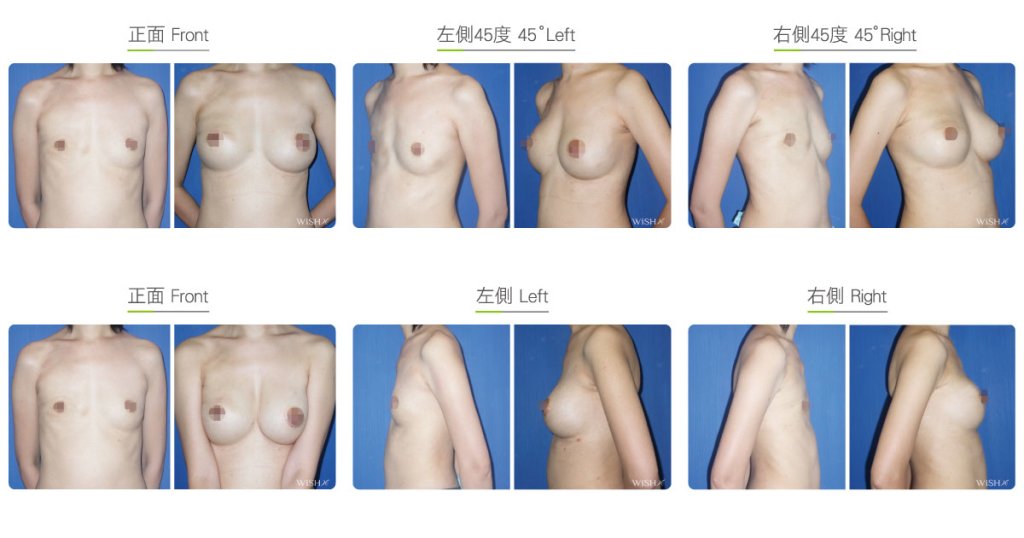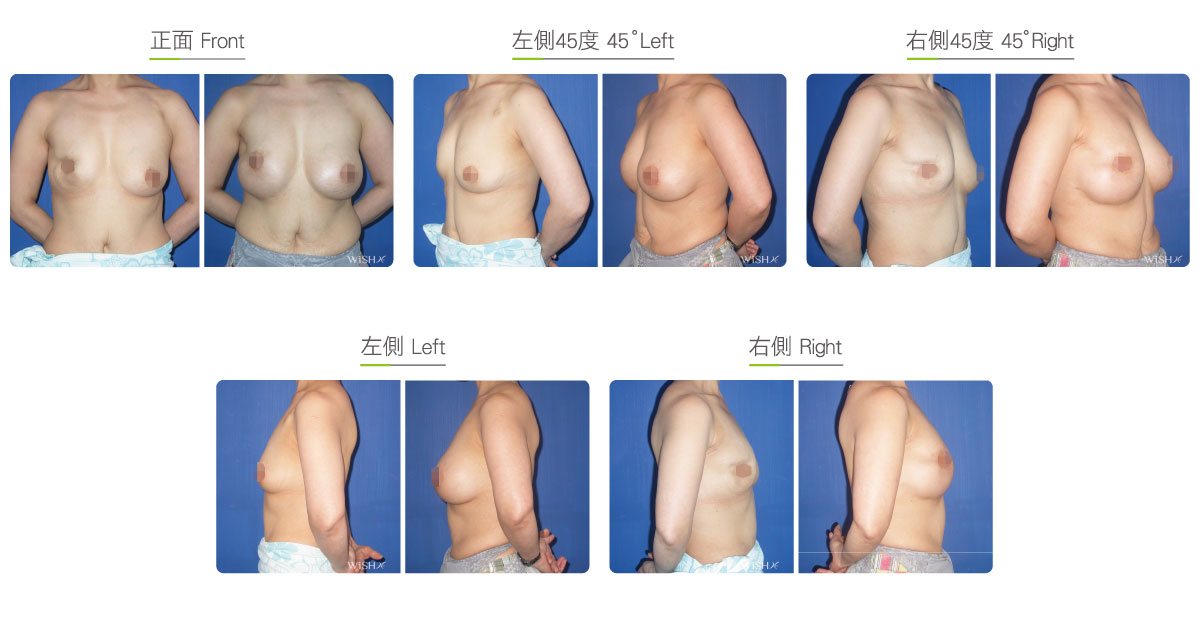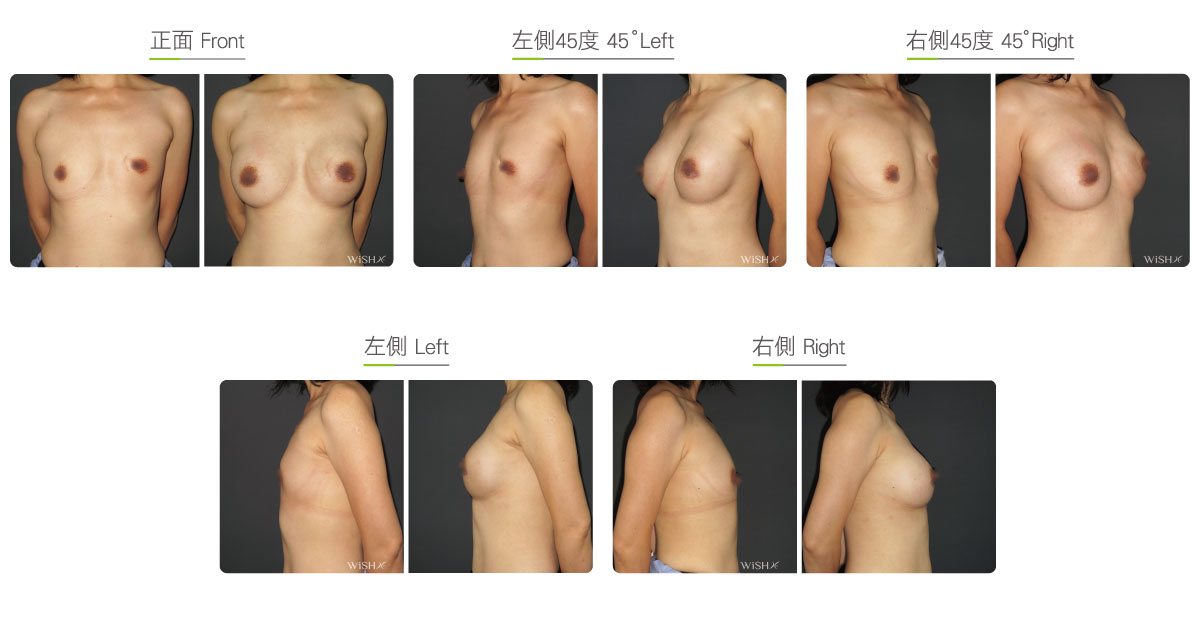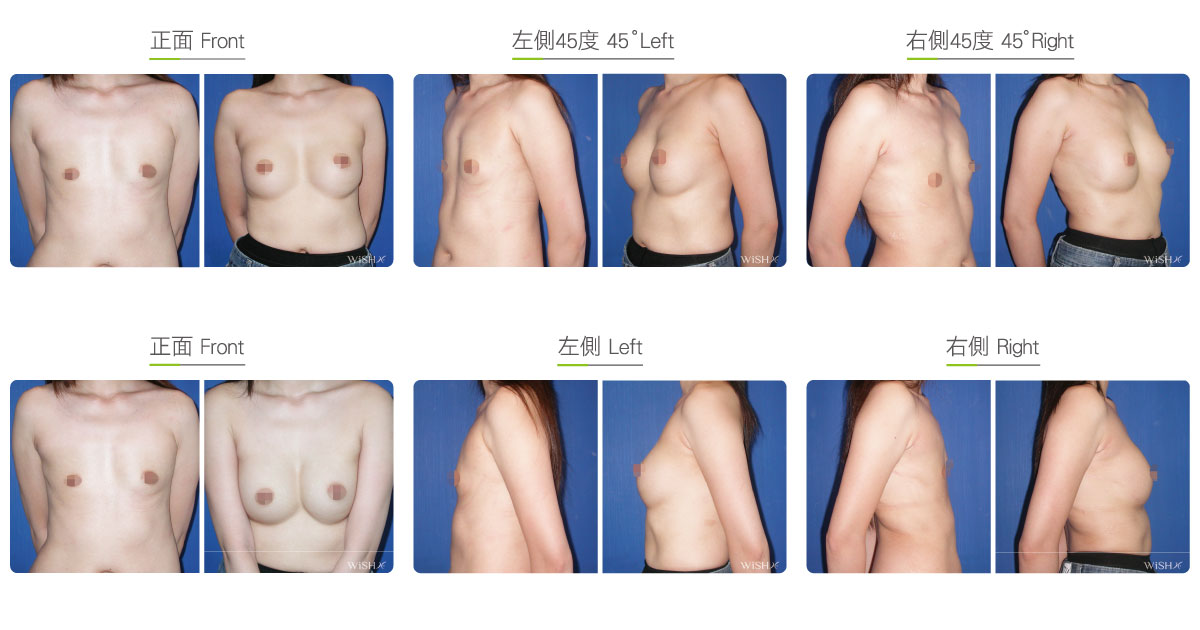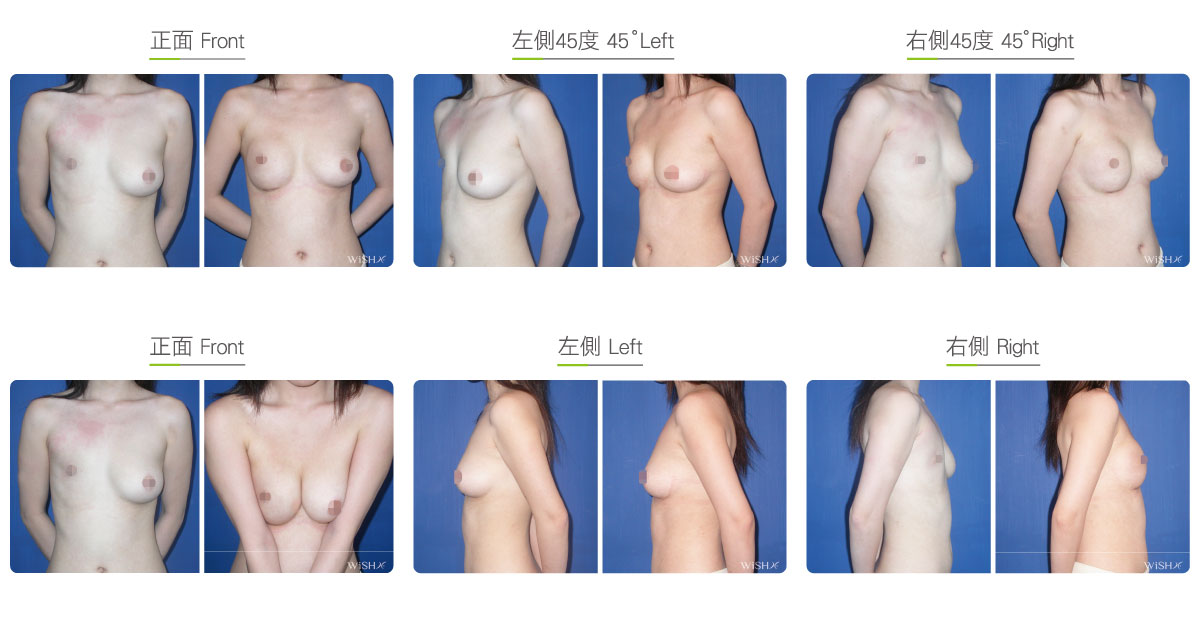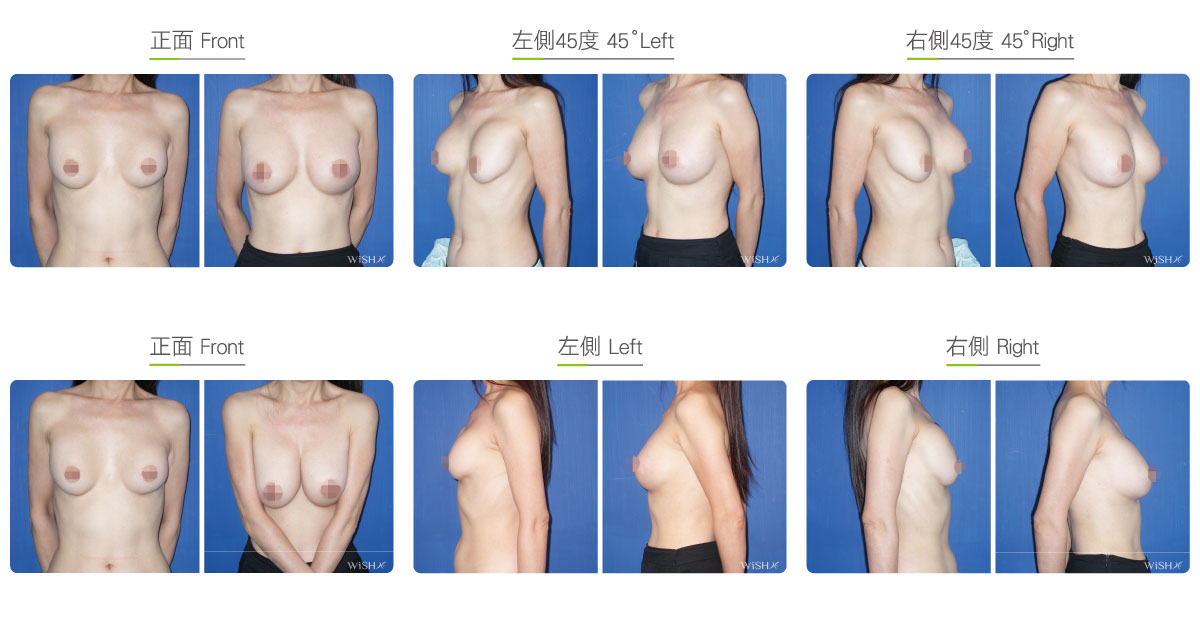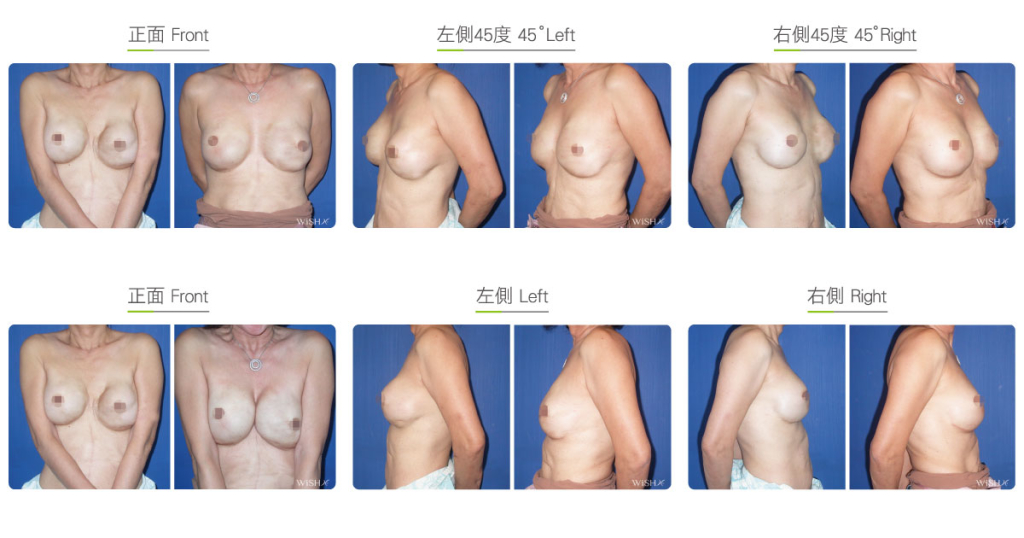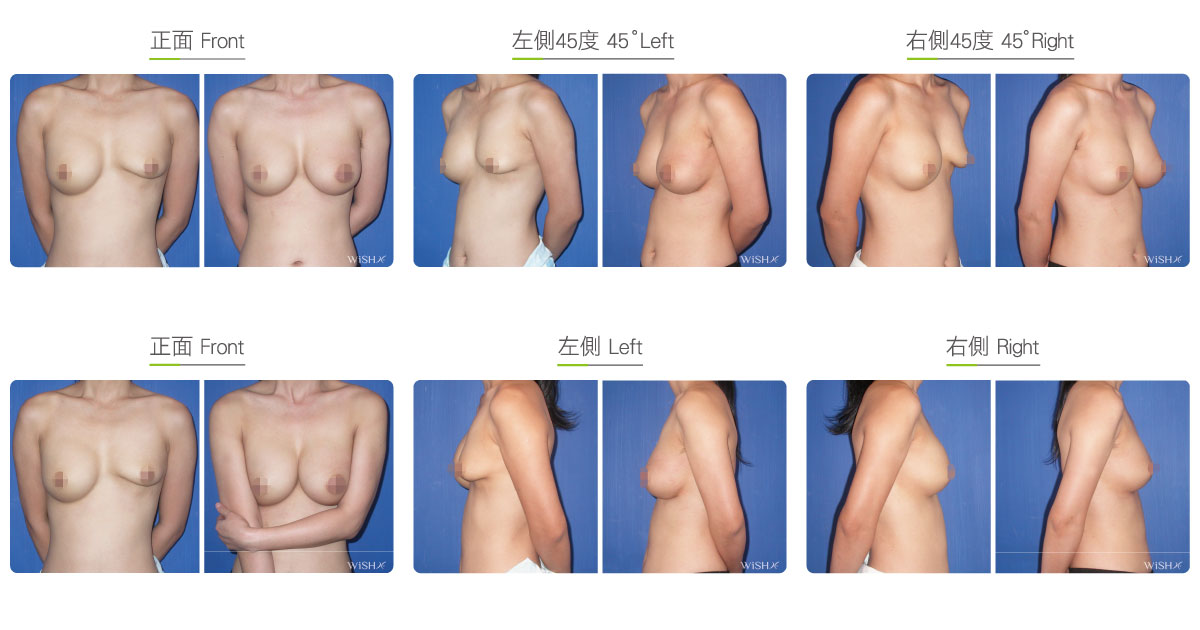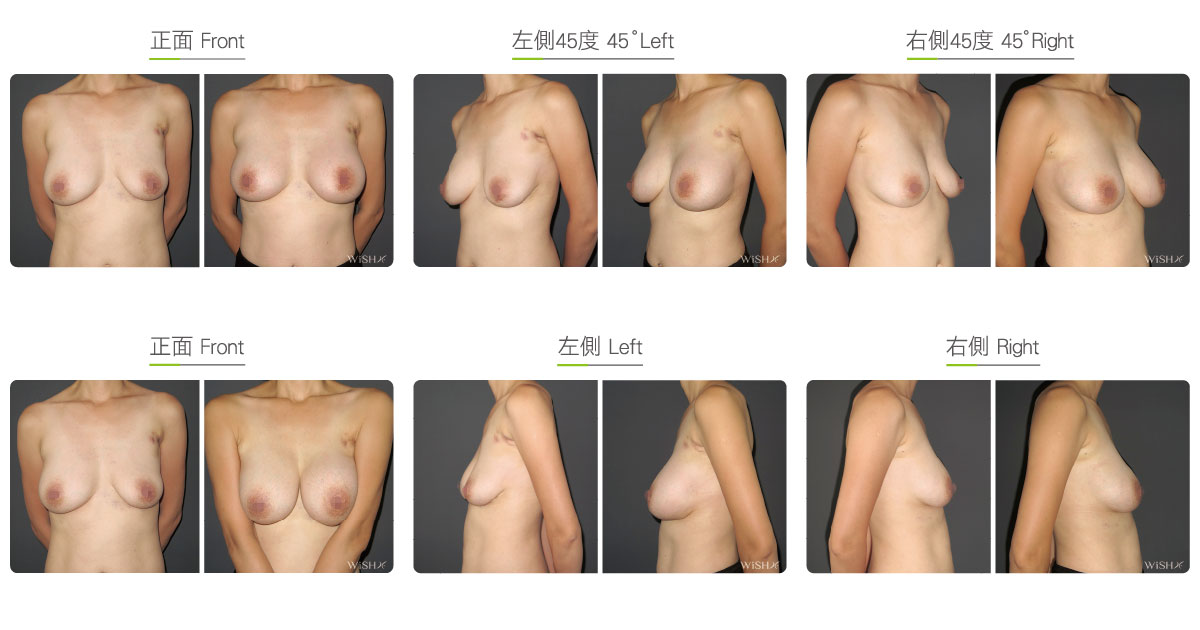One-stage Reconstruction
One-stage reconstruction can be performed for patients undergoing breast-conserving surgery due to early-stage breast cancer or pathological changes resulting from silicone injection, for those with breast lumpectomy, or for those with Poland syndrome with congenital hypoplasia of one breast. Patients’ breast tissue should be partially preserved to provide sufficient elasticity and cover of implants. Technically, this procedure is similar to ordinary endoscopic breast augmentations. Dr. Chuang will access the scar from the previous breast excision, dissect the pocket under the skin or mammary gland using an endoscope and ESUs, and place implants of appropriate size. Patients can choose from ipsilateral reconstruction or bilateral augmentation for the concurrent upgrade of the breast to achieve better symmetry.
This surgery allows for the one-time completion of breast reconstruction and/or contralateral augmentation with a simplified process and few complications. Patients can enjoy immediate and obvious results. However, implant size may be limited by patients’ skin elasticity. Textured implants should be preferentially used to allow faster breast shape stabilization, but they would also sacrifice the feel and texture of the breast. Further, implants may appear unnaturally round for those with thinner skin coverage or with larger breast excision. Autologous fat transfer could be performed in conjunction or separately in the future to achieve more ideal symmetry and better texture in these cases.
Surgical conditions
Duration
- Type of anesthesia: General anesthesia
- Type of incision: Through an original incision scar from mastectomy (3–4 cm)
- Recovery: Within 3–5 days
- Removal of stitches: 7–10 days
General instructions
No food and water on the day of surgery
- Frequent stretching should be performed for 1 month postoperatively to prevent axillary adhesion.
- Tasks and exercises that require excessive arm strength should be avoided, and underwired or push-up bras should not be worn for 3 months postoperatively.
- Smoking and consumption of collagen or vitamin C should be avoided for 3 months postoperatively to prevent the formation of capsules.
- Consistent and regular breast massage should be performed for 6 months postoperatively (no massages required in case of textured or teardrop implants).
Ideal candidates
- Those who underwent breast-conserving surgery.
- Those who underwent mastectomy years ago and have loose or ample skin.
- Those with at least 2 cm of chest skin in thickness on the affected breast.
- Those for whom part of the pectoralis major muscle was preserved during mastectomy (subtotal mastectomy).
- Those who need excision and reconstruction of the mammary gland due to PAAG or silicone injections (siliconoma).
- Those with local skin and scar contracture due to burn injury.
Possible complications
- Capsular contracture
- Poor wound healing
- Implant displacement
- Implant rippling or wrinkling
- Numb sensation in the front chest
Surgical advantages
-
A single surgery for breast reconstruction in a fast process and effective results.
-
A simple and safe operation almost similar to regular breast augmentation.
-
Breast augmentation can be performed together in the contralateral side to achieve better appearance and symmetry.
-
Highly reversible procedure; original breasts can be restored as soon as implants are removed.
Surgical drawbacks
-
The decision of breast size is limited by the elasticity and thickness of the skin on the affected side.
-
Tightened and stretched skin on the affected breast is more likely to lead to capsular contracture or breast deformity.
-
A longer period of postoperative care and massage is needed if using smooth implants.
-
Implants may appear harder and not as realistic if textured round or tear drop implants are used that do not require postoperative massages.
-
Not ideal for those who underwent breast radiation therapy.
-
More postoperative pain.

